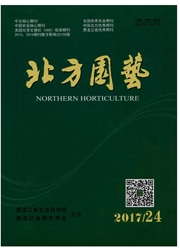

 中文摘要:
中文摘要:
以沙拐枣为试材,对其幼枝和茎进行了解剖学观察和研究,同时辅以泡果沙拐枣的茎的解剖学研究为对照,以期探讨沙拐枣的生态适应性。结果表明:沙拐枣的幼枝和茎的解剖结构显著不同,沙拐枣作为新疆荒漠植被中防风固沙的优良植物,其幼枝解剖结构已随环境发生特化,具有1~2层呈栅栏组织状排列的细胞,1层为海绵组织状排列的细胞,皆具叶绿体,皮层内含有粘液细胞等,表明沙拐枣长期对干旱、高温生境的适应,促使其更为强烈地分化出旱生结构,因而具有明显的生态适应性。
 英文摘要:
英文摘要:
Taking Calligonum mongolicum as materials, anatomical structures of stems and young stems were examined for a better understanding of the ecological adaptability,and in the meanwhile C. junceum's anatomical structures of stems were examined as a control. The results showed that anatomical structures of young stems was different from its stems. (2. mongolicurn was an excellent plants in Xinjiang desert vegetation in windbreak and sand fixation. Anatomical structures of young stems had changed with the environment specialized,it has 1-2 layer cells which was arranged in the shape of palisade tissue,a layer was arranged in the shape of the cells in the spongy tissue. Both of them had chloroplast and containing mucus cells in the cortex. The special ization of anatomical structure in C. mongolicum reflected the adaptation to special habitat of drought, high temperature environment, and this enabled a plant to differentiate strongly into xeromorphic structure. Therefore,it is of obvious significance in ecological adaptability.
 同期刊论文项目
同期刊论文项目
 同项目期刊论文
同项目期刊论文
 期刊信息
期刊信息
